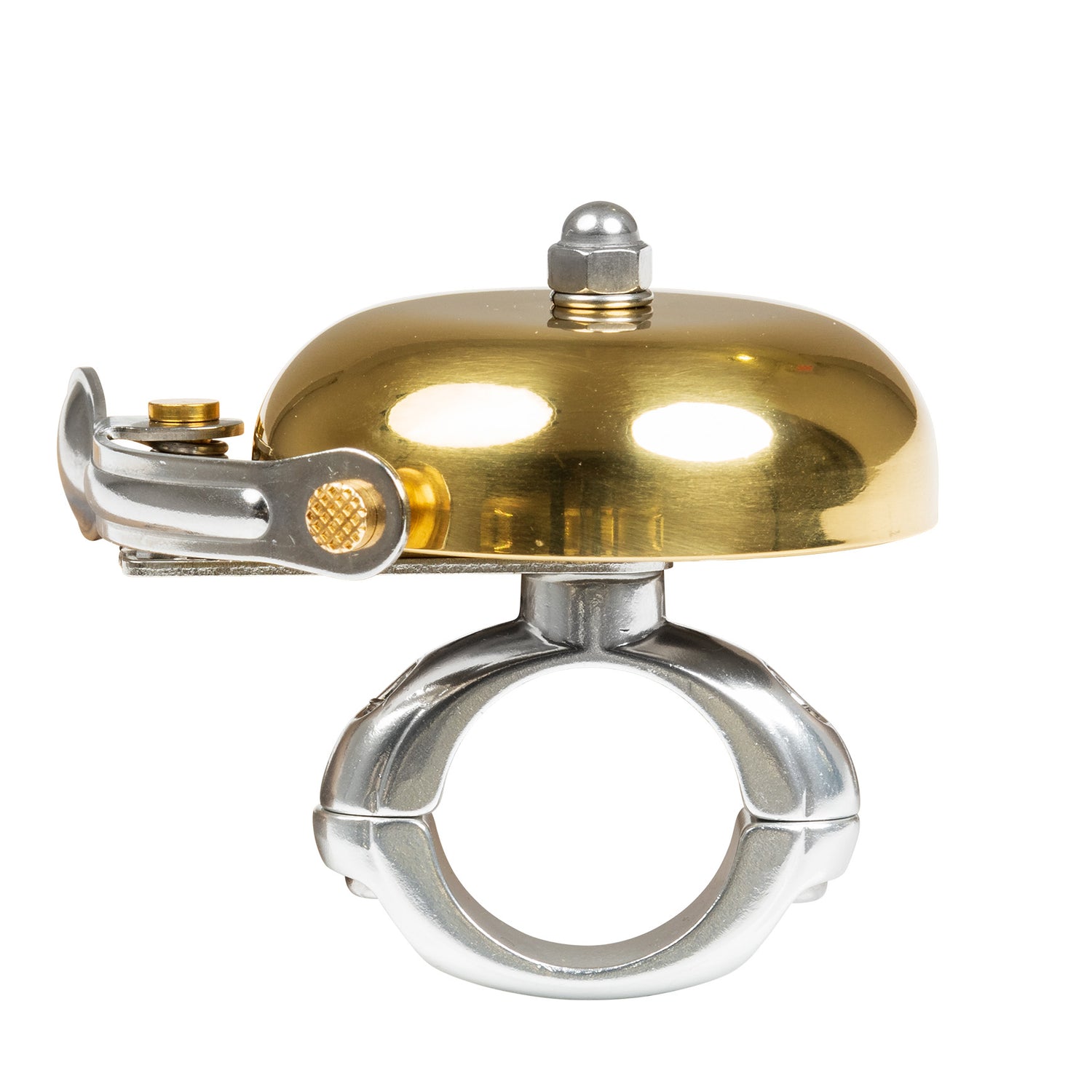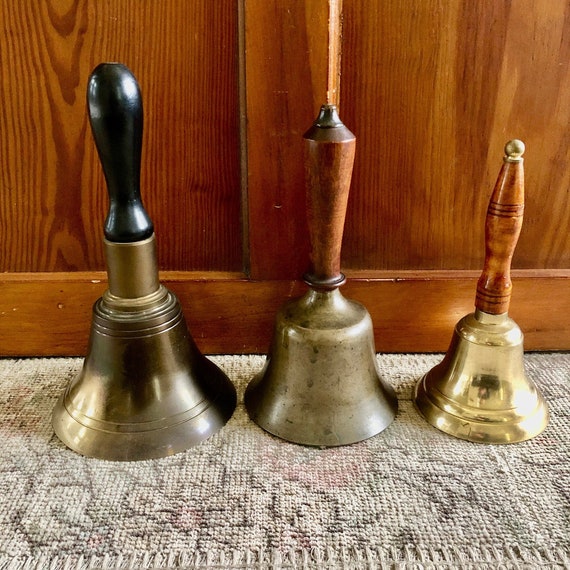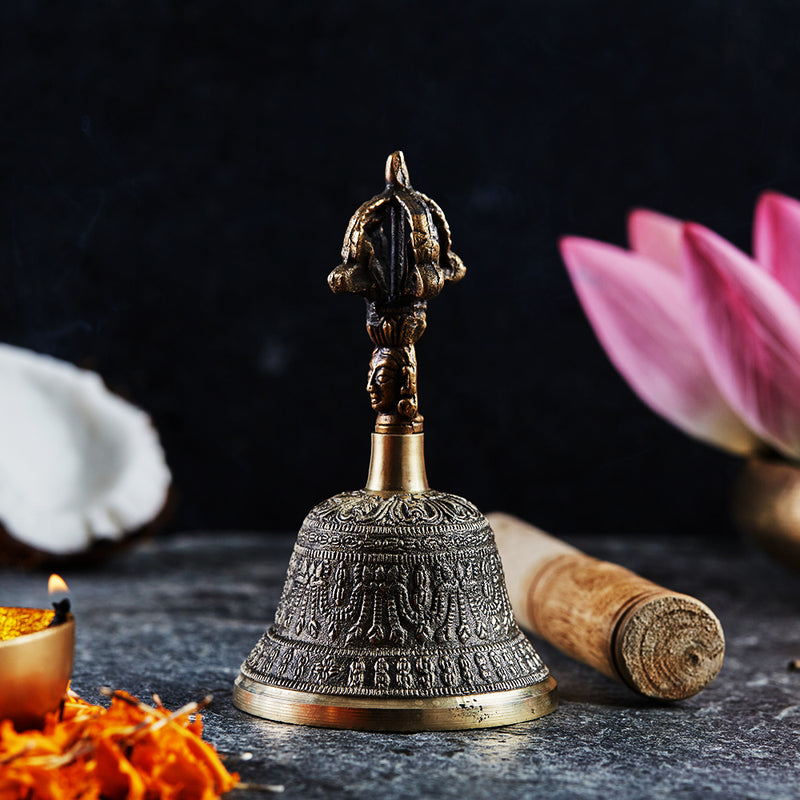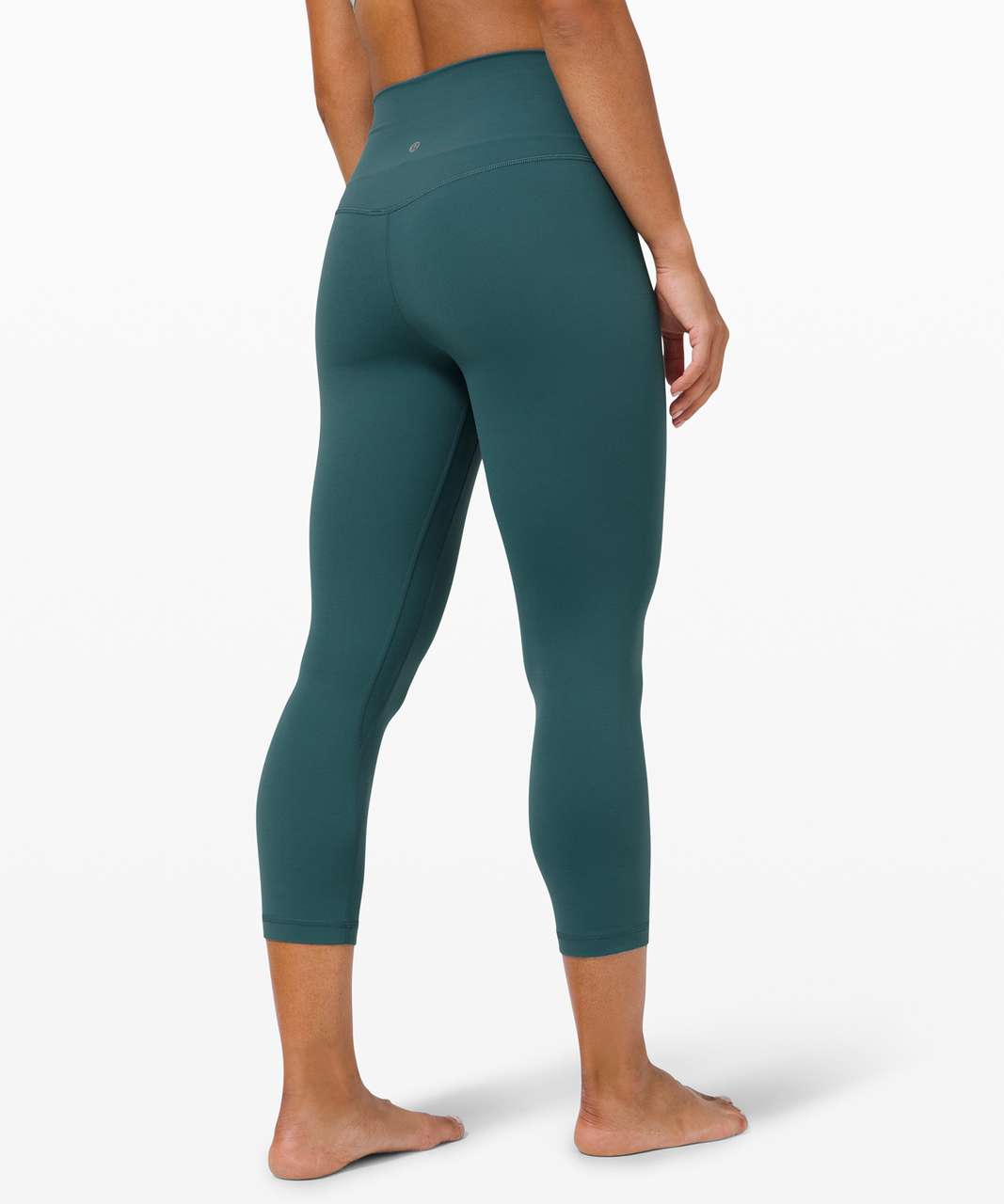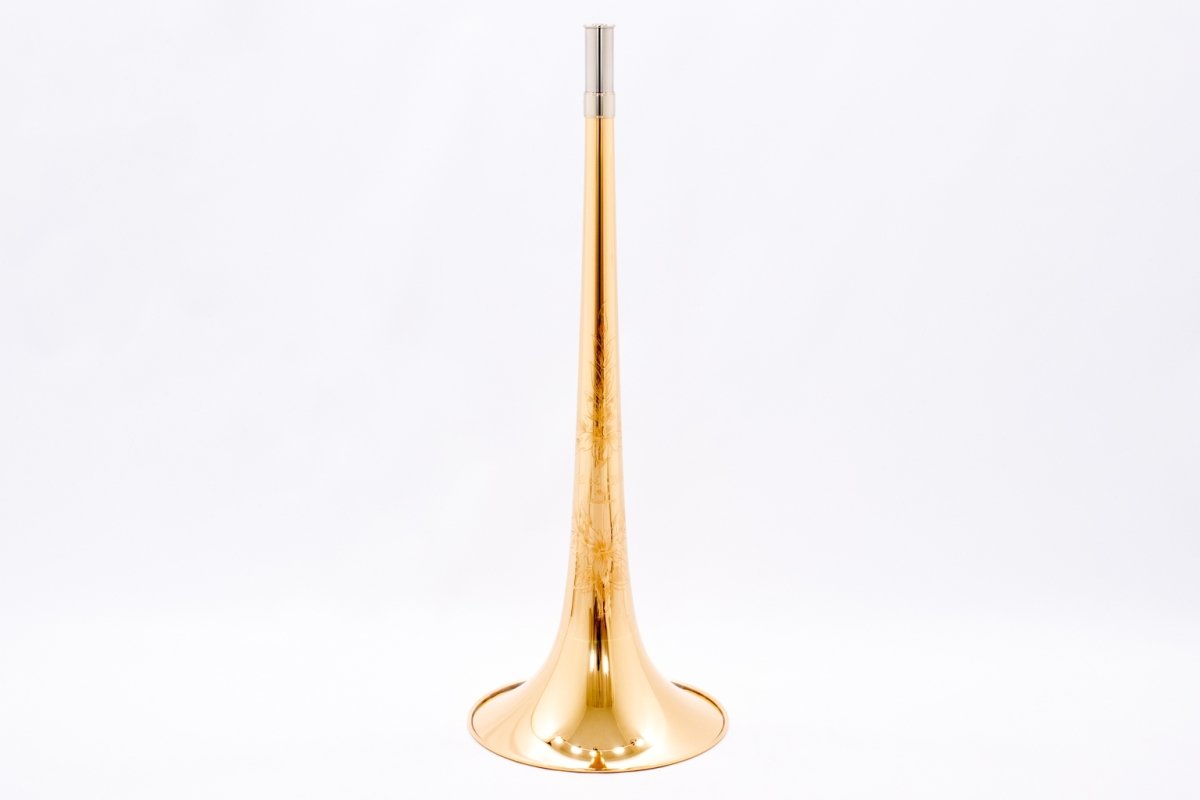
All S.E. Shires bells are handcrafted in our factory using traditional techniques. Custom bell model names usually begin with a prefix made up of letter indicating instrument type: A: alto trombone S: small-bore tenor trombone T: medium- or large-bore tenor trombone B: bass trombone Bell taper For tenor and bass trombo
All S.E. Shires bells are handcrafted in our factory using traditional techniques. Custom bell model names usually begin with a prefix made up of letter indicating instrument type:
A: alto trombone
S: small-bore tenor trombone
T: medium- or large-bore tenor trombone
B: bass trombone
Bell taper
For tenor and bass trombones, a roman numeral (I or II) may follow that letter; it specifies the shape of the bell taper. Because TI bells were the first that S.E. Shires made and have historically been the most common, that particular prefix is usually omitted:
SI: Small Bore 1 Taper. Standard Shires neckpipe taper.
SII: Small Bore 2 Taper. Broader neckpipe taper, reminiscent of vintage King instruments.
[unmarked]: TI, the original S.E. Shires tenor trombone taper
TI: Tenor 1 Taper. More compact and narrower through throat, Reminiscent of vintage Conn instruments. Tends to have a darker tone quality and more sound density. Great for players with naturally expansive sound or that want to get more sound forward.
TII: Tenor 2 Taper. Broader through bell throat. Reminiscent of Bach heritage. Tends to have a wider sound quality. Great for players wanting more width or more room for expression.
BI: Bass 1 Taper. More compact and narrower through throat, Reminiscent of vintage Conn instruments. Tends to have a darker tone quality and more sound density. Great for players with naturally expansive sound or that want to get more sound forward.
BII: Bass 2 Taper. Broader through bell throat. Reminiscent of Bach heritage. Tends to have a wider sound quality. Great for players wanting more width or more room for expression.
Construction and bead
Next, an arabic numeral describes the bell construction, and whether the bead wire is soldered (odd numbers) or unsoldered (even numbers):
Type #1: Traditional two piece bell made from a separate stem and flare that is brazed together, then spun. Two piece bells tend to have great stability and density to core of sound. Soldered bead favors pointed articulations and centered sound, more stability to the sustain of tone.
#2: Traditional two piece bell made from a separate stem and flare that is brazed together, then spun. Two piece bells tend to have great stability and density to core of sound. Unsoldered bead favors broad, wider, and more diffuse sound and softer, more covered articulations.
#5: Traditional one piece bell made from a single sheet of brass with a continuous brazed seam running down the bell. One piece bells typically have more flexibility. Soldered bead favors pointed articulations and centered sound, more stability to the sustain of tone.
#7: Modified two piece construction made to combine the best playing characteristics of both one piece and two piece bells. Soldered bead favors pointed articulations and centered sound, more stability to the sustain of tone.
#8: Modified two piece construction made to combine the best playing characteristics of both one piece and two piece bells. Unsoldered bead favors broad, wider, and more diffuse sound and softer, more covered articulations.
Bell material
After the construction, the bell material is indicated:
Y: Yellow brass—70% copper, 30% zinc—clear, pure sound with strong fundamental, keeps a very consistent tone color and overtone structure throughout the range of dynamics
R: Red brass—90% Copper, 10% Zinc—warm, rich sound with complex overtones, allows for a wide range of colors at different dynamics
G: Gold brass—85% Copper, 15% Zinc—combines many of the characteristics of yellow and red brass for a very balanced and flexible sound
D: Deutch Brass— Custom alloy blend between yellow brass and gold brass. Combines characteristics of yellow and gold brass for balanced and warm sound. Only available for seamed tuning slides.
SS: Sterling silver—very clear, dense sound, with prominent fundamental and sparse upper overtones—available for all bells by special order
Bell weight and other options
Other numbers and letters after the material signify a variety of options, and are sometimes combined. The most common include:
LW: Lightweight—very resonant and brilliant, with quick, easy response and open sound
M: Medium weight:—slightly lighter than standard weight, characteristics between standard and LW
HW: Heavyweight—holds together very well at loud dynamics, more centered sound with less brilliance—can require more effort to play
T7: Treatment 7—thinner in the flare—this provides easier response and lighter, less centered sound than the standard bell treatment
T8: Treatment 8—Standard beadwire, with combination of flexibility and firm slotting.
T9: Treatment 9—A wider beadwire, resulting in a more firm slot and deliberate articulation.
Bell diameter
For orchestral tenors, the standard diameter at the end of the flare is 8.5 inches. 7.5, 7.75 and 8-inch bells are also ..
We sell the best French horns, trumpets, and trombones in the world! We carry instruments from Yamaha, Conn, Bach, Shires, Hans Hoyer, XO, Engelbert Schmid, Ricco Kühn, Dieter Otto, Stomvi, Thein, Verus, Paxman, Dürk, and more. We also carry cases from Marcus Bonna, Wiseman, and Protec, mouthpieces from Josef Klier, Greg Black, and Griego, mutes from Denis Wick, RGC, and UpSound, and any other brass instrument accessories you need.
All S.E. Shires bells are handcrafted in our factory using traditional techniques. Custom bell model names usually begin with a prefix made up of letter indicating instrument type:
-
A: alto trombone
-
S: small-bore tenor trombone
-
T: medium- or large-bore tenor trombone
-
B: bass trombone
Bell taper
For tenor and bass trombones, a roman numeral (I or II) may follow that letter; it specifies the shape of the bell taper. Because TI bells were the first that S.E. Shires made and have historically been the most common, that particular prefix is usually omitted:
-
SI: Small Bore 1 Taper. Standard Shires neckpipe taper.
-
SII: Small Bore 2 Taper. Broader neckpipe taper, reminiscent of vintage King instruments.
-
[unmarked]: TI, the original S.E. Shires tenor trombone taper
TI: Tenor 1 Taper. More compact and narrower through throat, Reminiscent of vintage Conn instruments. Tends to have a darker tone quality and more sound density. Great for players with naturally expansive sound or that want to get more sound forward.
-
TII: Tenor 2 Taper. Broader through bell throat. Reminiscent of Bach heritage. Tends to have a wider sound quality. Great for players wanting more width or more room for expression.
-
BI: Bass 1 Taper. More compact and narrower through throat, Reminiscent of vintage Conn instruments. Tends to have a darker tone quality and more sound density. Great for players with naturally expansive sound or that want to get more sound forward.
-
BII: Bass 2 Taper. Broader through bell throat. Reminiscent of Bach heritage. Tends to have a wider sound quality. Great for players wanting more width or more room for expression.
Construction and bead
Next, an arabic numeral describes the bell construction, and whether the bead wire is soldered (odd numbers) or unsoldered (even numbers):
-
Type #1: Traditional two piece bell made from a separate stem and flare that is brazed together, then spun. Two piece bells tend to have great stability and density to core of sound. Soldered bead favors pointed articulations and centered sound, more stability to the sustain of tone.
-
#2: Traditional two piece bell made from a separate stem and flare that is brazed together, then spun. Two piece bells tend to have great stability and density to core of sound. Unsoldered bead favors broad, wider, and more diffuse sound and softer, more covered articulations.
-
#5: Traditional one piece bell made from a single sheet of brass with a continuous brazed seam running down the bell. One piece bells typically have more flexibility. Soldered bead favors pointed articulations and centered sound, more stability to the sustain of tone.
-
#7: Modified two piece construction made to combine the best playing characteristics of both one piece and two piece bells. Soldered bead favors pointed articulations and centered sound, more stability to the sustain of tone.
-
#8: Modified two piece construction made to combine the best playing characteristics of both one piece and two piece bells. Unsoldered bead favors broad, wider, and more diffuse sound and softer, more covered articulations.
Bell material
After the construction, the bell material is indicated:
-
Y: Yellow brass—70% copper, 30% zinc—clear, pure sound with strong fundamental, keeps a very consistent tone color and overtone structure throughout the range of dynamics
-
R: Red brass—90% Copper, 10% Zinc—warm, rich sound with complex overtones, allows for a wide range of colors at different dynamics
-
G: Gold brass—85% Copper, 15% Zinc—combines many of the characteristics of yellow and red brass for a very balanced and flexible sound
-
D: Deutch Brass— Custom alloy blend between yellow brass and gold brass. Combines characteristics of yellow and gold brass for balanced and warm sound. Only available for seamed tuning slides.
-
SS: Sterling silver—very clear, dense sound, with prominent fundamental and sparse upper overtones—available for all bells by special order
Bell weight and other options
Other numbers and letters after the material signify a variety of options, and are sometimes combined. The most common include:
-
LW: Lightweight—very resonant and brilliant, with quick, easy response and open sound
-
M: Medium weight:—slightly lighter than standard weight, characteristics between standard and LW
-
HW: Heavyweight—holds together very well at loud dynamics, more centered sound with less brilliance—can require more effort to play
-
T7: Treatment 7—thinner in the flare—this provides easier response and lighter, less centered sound than the standard bell treatment
-
T8: Treatment 8—Standard beadwire, with combination of flexibility and firm slotting.
-
T9: Treatment 9—A wider beadwire, resulting in a more firm slot and deliberate articulation.
Bell diameter
For orchestral tenors, the standard diameter at the end of the flare is 8.5 inches. 7.5, 7.75 and 8-inch bells are also available for tenor bells. For bass trombone bell flares, 9.5 inches is standard. 10- and 10.5-inch diameters are also available. Standard diameters (8.5 for tenor and 9.5 inches for bass) are not stamped; custom bell diameters are stamped at the end of the bell model name.
Named bells
Certain custom bells, inspired by classic trombones of the past, are referred to by abbreviated model names that reflect their design lineage:
-
2RVE: (Two piece, unsoldered bead, red brass) Vintage Elkhart. The 2RVE and 2RVET7 are two of our most popular bells, based on the classic Elkhart models of the 1940s, ’50s and ’60s.
-
TII 5YVNY and TII 5GVNY: (One piece, soldered bead) yellow or gold brass Vintage New York. Inspired by classic Mt. Vernon, NY model bells.
Examples
-
7YLW—Orchestral tenor TI (standard) taper, modified two-piece construction, soldered bead, lightweight yellow brass, standard 8.5 inch bell flare
-
BII 1Y 10—Bass BII (broad) taper, standard two-piece construction, soldered bead, standard weight yellow brass, 10-inch diameter.
All S.E. Shires bells are handcrafted in our factory using traditional techniques. Custom bell model names usually begin with a prefix made up of letter indicating instrument type: A: alto trombone S: small-bore tenor trombone T: medium- or large-bore tenor trombone B: bass trombone Bell taper For tenor and bass trombones, a roman numeral (I or II) may follow that letter; it specifies the shape of the bell taper. Because TI bells were the first that S.E. Shires made and have historically been the most common, that particular prefix is usually omitted: SI: Small Bore 1 Taper. Standard Shires neckpipe taper. SII: Small Bore 2 Taper. Broader neckpipe taper, reminiscent of vintage King instruments. [unmarked]: TI, the original S.E. Shires tenor trombone taper TI: Tenor 1 Taper. More compact and narrower through throat, Reminiscent of vintage Conn instruments. Tends to have a darker tone quality and more sound density. Great for players with naturally expansive sound or that want to get more sound forward. TII: Tenor 2 Taper. Broader through bell throat. Reminiscent of Bach heritage. Tends to have a wider sound quality. Great for players wanting more width or more room for expression. BI: Bass 1 Taper. More compact and narrower through throat, Reminiscent of vintage Conn instruments. Tends to have a darker tone quality and more sound density. Great for players with naturally expansive sound or that want to get more sound forward. BII: Bass 2 Taper. Broader through bell throat. Reminiscent of Bach heritage. Tends to have a wider sound quality. Great for players wanting more width or more room for expression. Construction and bead Next, an arabic numeral describes the bell construction, and whether the bead wire is soldered (odd numbers) or unsoldered (even numbers): Type #1: Traditional two piece bell made from a separate stem and flare that is brazed together, then spun. Two piece bells tend to have great stability and density to core of sound. Soldered bead favors pointed articulations and centered sound, more stability to the sustain of tone. #2: Traditional two piece bell made from a separate stem and flare that is brazed together, then spun. Two piece bells tend to have great stability and density to core of sound. Unsoldered bead favors broad, wider, and more diffuse sound and softer, more covered articulations. #5: Traditional one piece bell made from a single sheet of brass with a continuous brazed seam running down the bell. One piece bells typically have more flexibility. Soldered bead favors pointed articulations and centered sound, more stability to the sustain of tone. #7: Modified two piece construction made to combine the best playing characteristics of both one piece and two piece bells. Soldered bead favors pointed articulations and centered sound, more stability to the sustain of tone. #8: Modified two piece construction made to combine the best playing characteristics of both one piece and two piece bells. Unsoldered bead favors broad, wider, and more diffuse sound and softer, more covered articulations. Bell material After the construction, the bell material is indicated: Y: Yellow brass—70% copper, 30% zinc—clear, pure sound with strong fundamental, keeps a very consistent tone color and overtone structure throughout the range of dynamics R: Red brass—90% Copper, 10% Zinc—warm, rich sound with complex overtones, allows for a wide range of colors at different dynamics G: Gold brass—85% Copper, 15% Zinc—combines many of the characteristics of yellow and red brass for a very balanced and flexible sound D: Deutch Brass— Custom alloy blend between yellow brass and gold brass. Combines characteristics of yellow and gold brass for balanced and warm sound. Only available for seamed tuning slides. SS: Sterling silver—very clear, dense sound, with prominent fundamental and sparse upper overtones—available for all bells by special order Bell weight and other options Other numbers and letters after the material signify a variety of options, and are sometimes combined. The most common include: LW: Lightweight—very resonant and brilliant, with quick, easy response and open sound M: Medium weight:—slightly lighter than standard weight, characteristics between standard and LW HW: Heavyweight—holds together very well at loud dynamics, more centered sound with less brilliance—can require more effort to play T7: Treatment 7—thinner in the flare—this provides easier response and lighter, less centered sound than the standard bell treatment T8: Treatment 8—Standard beadwire, with combination of flexibility and firm slotting. T9: Treatment 9—A wider beadwire, resulting in a more firm slot and deliberate articulation. Bell diameter For orchestral tenors, the standard diameter at the end of the flare is 8.5 inches. 7.5, 7.75 and 8-inch bells are also available for tenor bells. For bass trombone bell flares, 9.5 inches is standard. 10- and 10.5-inch diameters are also available. Standard diameters (8.5 for tenor and 9.5 inches for bass) are not stamped; custom bell diameters are stamped at the end of the bell model name. Named bells Certain custom bells, inspired by classic trombones of the past, are referred to by abbreviated model names that reflect their design lineage: 2RVE: (Two piece, unsoldered bead, red brass) Vintage Elkhart. The 2RVE and 2RVET7 are two of our most popular bells, based on the classic Elkhart models of the 1940s, ’50s and ’60s. TII 5YVNY and TII 5GVNY: (One piece, soldered bead) yellow or gold brass Vintage New York. Inspired by classic Mt. Vernon, NY model bells. Examples 7YLW—Orchestral tenor TI (standard) taper, modified two-piece construction, soldered bead, lightweight yellow brass, standard 8.5 inch bell flare BII 1Y 10—Bass BII (broad) taper, standard two-piece construction, soldered bead, standard weight yellow brass, 10-inch diameter.
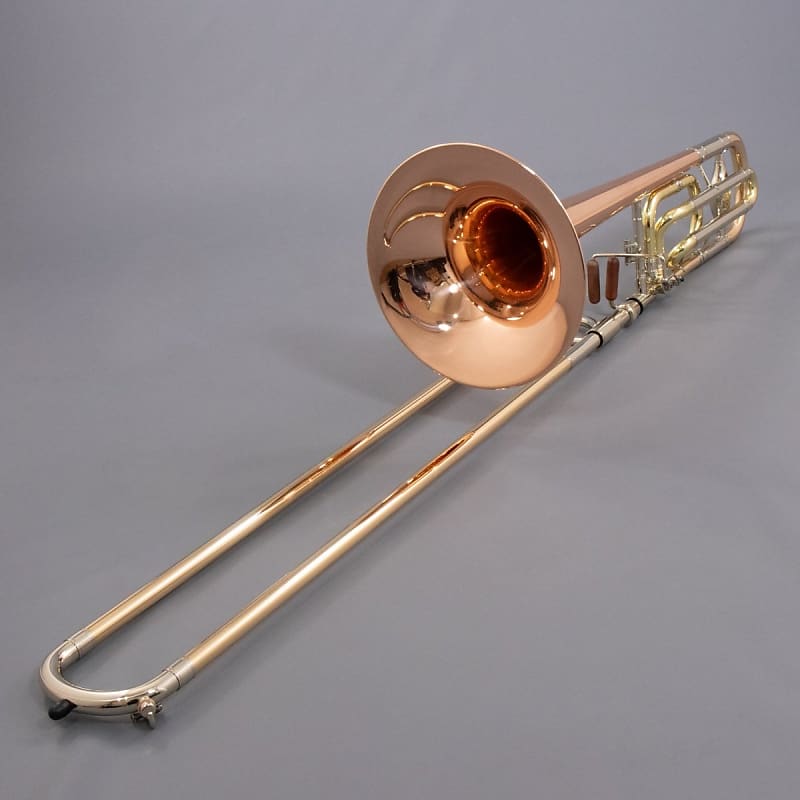
Voigt J-188 Bb/F Tenor Trombone
The S.E. Shires Custom Alto Trombone is a versatile instrument with the consistency, playability, and projection that has made S.E. Shires trombones

S.E. Shires A7YLW Custom Alto Trombone - Serial #: 13217 (Demo)
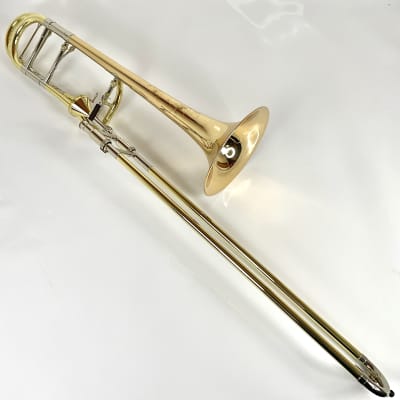
S.E. Shires Q30GA Q Series Tenor Trombone
Don't see the colors you like here? Check out the Marcus Bonna Options page. ****** This model fits a detachable bell tenor trombone with bell size up

Special Order a Marcus Bonna Tenor Trombone Detachable Bell Baby Case

S.E. Shires A7YLW Custom Alto Trombone - Serial #: 13217 (Demo

S.E. Shires Q11RS Q Series C Trumpet
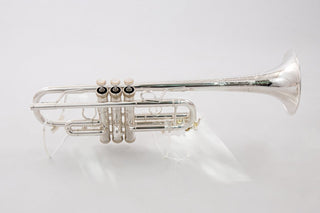
Products – Page 46 – Houghton Horns
Handslides control the initial feel of the instrument. Handslide bore size, width, crook size, alloys and weights are contributing factors for

S.E. Shires Custom Series Tenor Trombone Handslide
Schmitt Music offers musical instruments for sale: shop saxophones, flutes, trumpets, trombones, accessories, sheet music & books and more.

S.E. Shires Custom Large Bore Tenor Trombone

S.E. Shires Trombones – Houghton Horns

Thein Belcanto Tenor Trombone -- Explained
All S.E. Shires bells are handcrafted in our factory using traditional techniques. Custom bell model names usually begin with a prefix made up of

S.E. Shires Custom Series Tenor Trombone Bell
